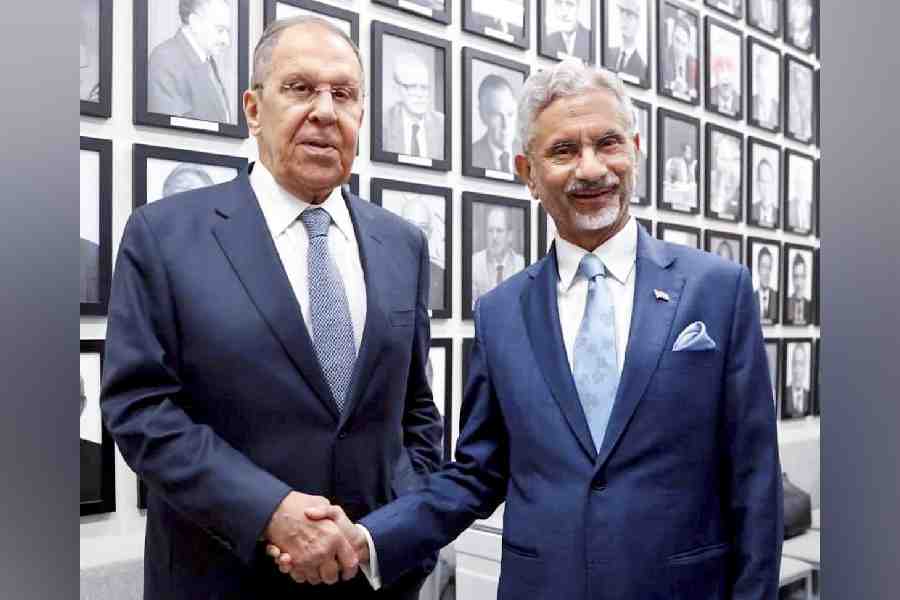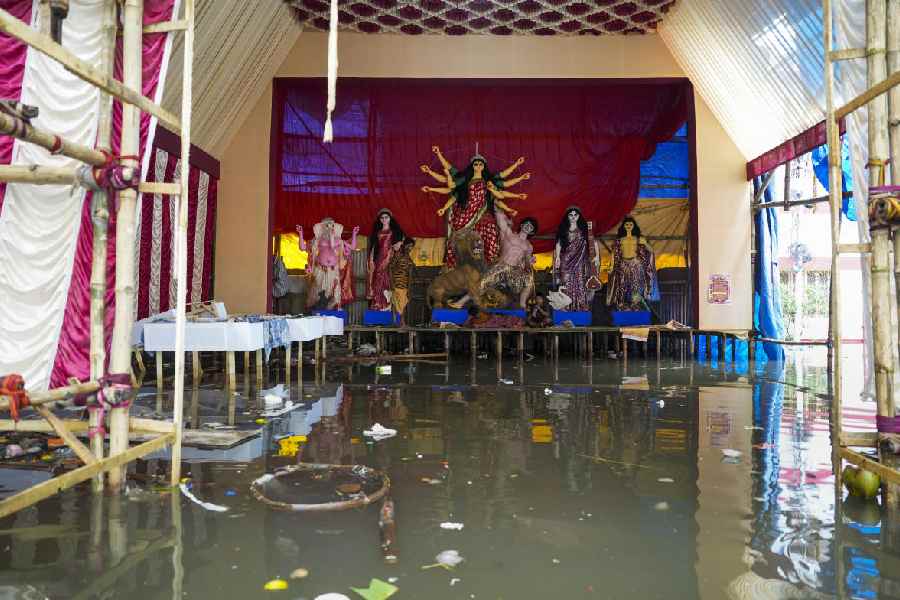 |
 |
| SKIN is in: (top) A still from the film K, and (above) a moment from Ekti Romharshak Dakatir Galpo, both directed by Birsa Dasgupta (below) |
The bathtub was ready, but the director thought it prudent to add some more bubbles to the water to hide the actress’s clothes from the camera. “She had to look as if she was nude,” says Anindita Sarbadhicary, explaining a shot from her first film for German television with a German cast.
But as Sarbadhicary snipped off the top of another packet of bubble bath for extra suds, she sensed movement behind her. She looked up to see that the actress had not only stripped as she prepared for the shot, but as she strutted stark naked to the bathtub, not a single person in the unit so much as glanced her way.
For Sarbadhicary it was a moment of revelation that she recalls with clarity eight years later. “I had always wondered why we in India just couldn’t get our lovemaking scenes right. No matter what you did, you always ended up looking sleazy. I realised then that it was all about how comfortable you were with the idea of nudity. I think it is this that makes all the difference between what is aesthetic and what is not.”
Back home, Sarbadhicary is determined to try and portray sex in her films for Bengali television channels without frills. “It means depicting sex explicitly without resorting to innuendoes,” she says.
Sarbadhicary, who has made 70 films for television, out of which 55 are love stories and all with “explicit” intimate scenes, is among a new breed of telefilm directors not scared of portraying sex in sharp focus. And not surprisingly, Bengali television is brimming over with sexual acts — good, bad and ugly.
There has been a plethora of “bold” scenes, ranging from the tender to the sado-masochistic. In Hariey Gechhi Ami (I have lost myself), a film aired on ETV Bangla in 2005, Sarbadhicary has a shot of a man pouring molten wax on his lover.
Director Birsa Dasgupta’s first two telefilms — made in 2006 — for the Bengali movie and music channel, Tara Musik, had scenes, which by his own admission, “had fans, friends and foes alike” baying for his blood. “How could you be so sick?” screamed one e-mail referring to the climactic shot of the telefilm, K, where a contract killer and a single mother give vent to dark desires by ripping off each other’s clothes as much as their own illegitimate social identities.
For his upcoming film, Hriday (The Heart) for Tara Musik, slated to be screened in September, Dasgupta will have two of his characters “come together with emotional intensity and raw physicality”. The film revolves around a passionate psycho-physiological encounter between a man who survives on a transplant from a dead man’s heart and the wife of the dead man. “The lovemaking scenes between them are not tender but turbulent,” states Dasgupta, whose film, Ekti Romharshok Dakatir Golpo, was also sexually explicit.
Telefilms are venturing into areas that Bengali cinema is still somewhat uncomfortable with. “I think that compared to cinema, television in Bengal has explored sexuality much more imaginatively and even radically,” says Shyamal Sengupta, filmmaker and former dean of the Satyajit Ray Film and Television Institute, Calcutta. “This could be because television censorship is less stringent than that of cinema, allowing film-makers more freedom of expression.”
And even in tele- films, there has been a marked change in the treatment of sexuality in recent years. Today’s directors stress that the new films have a “different” approach to sex.
For one, says Sarbadhicary, there is more bare skin on TV. “But that makes it all the more open and honest. It’s when something is covert that sleaze creeps in,” she says. Dasgupta adds that sex in today’s telefilms has a pivotal role to play. “The scenes in question are there because they are inherent to the plot. Today we have the gumption to show what necessarily follows rather than not address it.”
So you have Ekti Kharap Na Bashar Galpo (A Tale of Non-Hate), directed by Shyamal Sengupta. One of the characters in the 2005 film is a middle class Bengali divorced woman, who continues to sleep with her ex-husband for no other reason than that, as she tells him, “You are good in bed”. Sengupta says, “The idea was to be brutally honest in depicting a relationship not based on either procreative or romantic love.”
The change in how sexuality is depicted on television today is also clearly reflective of the mindset of a new breed of professional film-makers, who as Sarbadhicary says, are “open, honest and uninhibited”. Adds Dasgupta, “I have grown up on a diet of very good European and Hollywood cinema and I will not deny that I am influenced by these.”
Yet, even some years ago, the topic was seen as a no-entry zone. Rathikant Basu, chairman, Tara Network, holds that earlier attempts to bring in “adult content” to television often failed. Following a central government green signal — during Rajiv Gandhi’s prime ministership, allowing nudity on television after 11 pm — Basu, who was then head of Star TV in India, found himself at the receiving end of a public interest litigation. The PIL demanded that he apologise for airing “obscene” material on public television, following the screening of the 1948 De Sica classic, The Bicycle Thief.
Even now, Basu warns, a violation of the Broadcast Code, which bans “obscenity”, can land a film-maker or a channel executive in jail. “But Tara encourages creativity and is open to a filmmaker’s depiction of sexuality, provided this depiction does not amount to crudity or obscenity,” he says.
Indeed, not everyone is convinced that the depiction of sexuality on the Bengali small screen is indicative of any mature approach to it. “No serious thought has gone into the subject at all,” holds critic Samik Bandyopadhyay. “There is an overdose of exposure of the body. You find people in various degrees of undress all around you. Perhaps there is a more explicit depiction of the act of lovemaking,” he says.
Neither does Bandyopadhyay believe that TV filmmakers treat sexuality aesthetically. “There has been no attempt to evolve more aesthetic or mature ways of presenting the body or sex as such. There are still the same crude camera angles and the same lack of intensity or complexity which transforms a scene from a physical plane to the aesthetic.”
Sarbadhicary says this is reflected in the actors’ attitude to enacting scenes that require physical intimacy. “I find that it is difficult for Bengali actors to separate themselves from the character when it comes to lovemaking sequences. Most of them are very uncomfortable,” she says. “I have written off some people permanently from my casting list for not wanting to do intimate scenes.”
Interestingly, she finds that men are more reluctant than women to do intimate scenes. “They seem to be afraid of their wives,” she laughs. “Women are more able to relate a scene to the requirement of the script.”
Actress Churni Ganguly, whom Sarbadhicary has directed and whom she finds “mature enough to separate self from the character”, sums up the experience of enacting lovemaking scenes as — “not any different from enacting any other part of a character’s experience.” She says, “You have to put faith in the director to not make it appear obscene or in bad taste. If you can’t trust the director, you should not work with him or her. But you should not have separate standards for doing intimate scenes and other scenes.”
And when actors and filmmakers are both willing, the definition of sexuality can only change. If they have their way, sex on TV will no longer be a four-letter word — but a world on its own.










